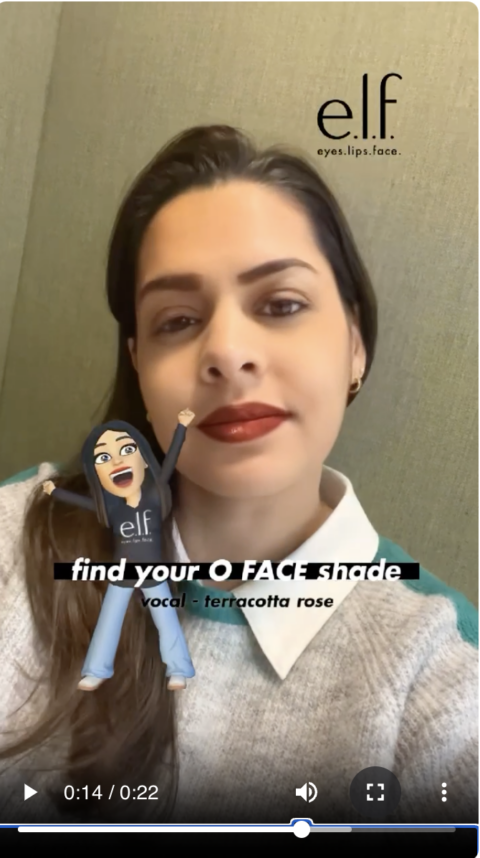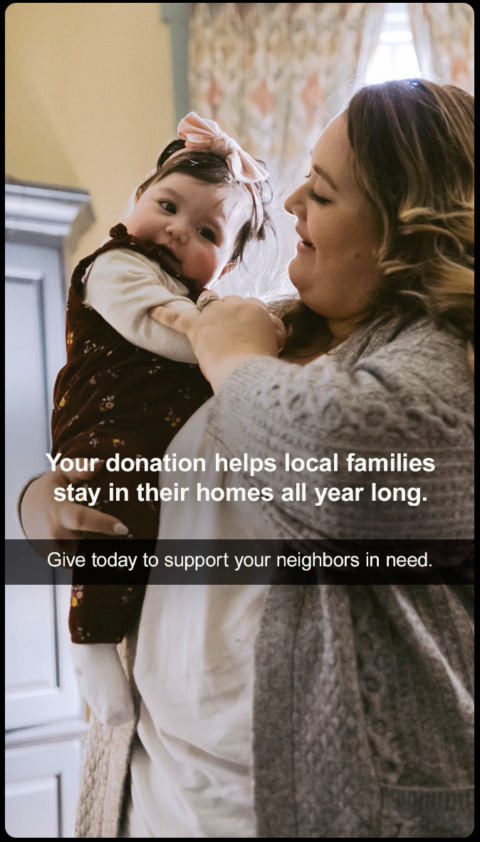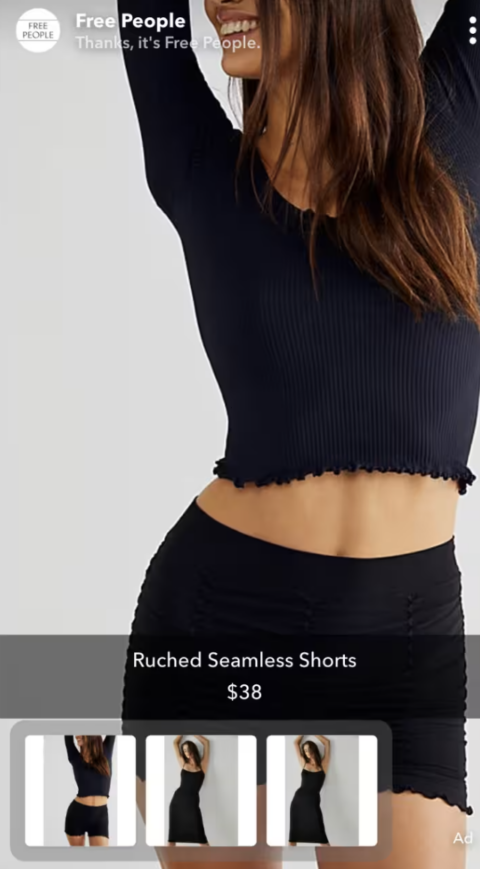SEO
An In-Depth Guide For Businesses

Social media marketing is all about being where your audience is.
If your target audience is active on a platform, then you should be, too. And if you’re looking to speak to a younger demographic, Snapchat can be a powerful marketing tool for your business.
Snapchat is the fifth largest social media network in the world – but it’s one of the most misunderstood (and underestimated) by marketers.
So, if you’re concerned about missing the boat on this platform, you’re not alone. You’re also not out of touch – you just need a comprehensive guide to get started. And you’re in the right place.
In this updated guide to Snapchat marketing, we’ll provide you with a deep dive into the multimedia messaging platform, explain who’s using it, and give you the strategies you need to add it effectively to your marketing mix.
Why Use Snapchat For Marketing? (Is It Still Relevant?)
Successful marketers focus on grasping every opportunity to reach potential customers – and Snapchat continues to offer unique opportunities.
As of 2024, Snapchat boasts over 406 million active daily users, with more than 80% of them being 34 or younger. The platform reaches 90% of the 13-24-year-old population worldwide and 75% of 13-34-year-olds in over 25 countries.
This makes it an ideal platform for targeting Millennials, Gen Z, and, increasingly, Gen Alpha.
While it might not have the massive user base of Facebook or YouTube, it drives impressive engagement. According to recent data, the average Snapchat user opens the app over 40 times per day and spends about 30+ minutes daily on the platform – which means people interact with their social circles on Snapchat more than any other social network.
Yet, when it comes to marketing, Snapchat is a relatively untapped territory. While every brand seems to have a Facebook and Instagram presence these days, comparatively few have a foothold on Snapchat. And that just means more opportunity for your brand.
The boon of Snapchat is how it’s optimized for authenticity. Given the ephemeral nature of the app and the more unfiltered style of content approach, brands can use the platform to connect with their audience in ways that feel genuine and immediate – which is more valuable than ever.
And, as if all of this wasn’t enough, Snapchat has established itself as a competitive force in the social commerce market. With its augmented reality (AR) shopping experiences, you’re able to build immersive shopping experiences for users through the app – something most other platforms can’t compete with.
By now, it should be crystal clear why Snapchat could be a strong addition to your marketing strategy. So, how do you get started? Let’s break it down.
How Does Snapchat Work? A Brief Overview
If your social media experience is primarily with platforms like Facebook, Instagram, or X (Twitter), Snapchat’s interface may initially feel like a whole new world.
Snapchat’s design is unique – it’s built for spontaneity, exclusivity, and in-the-moment content creation. When you open the app, it goes directly to the camera, making it super easy for you to capture and share videos and photos (called “Snaps”) in just a few seconds.
You can then edit these Snaps using a variety of filters, stickers, and AR Lenses before sending them directly to your chosen friends or adding to your “Story,” which remains viewable for 24 hours. There’s also a newer Spotlight feature, similar to TikTok, for sharing short-form videos with wider audiences.
The app offers a host of other features, including a Snap Map, an AI-powered chatbot, and disappearing direct messages. Long story short: There are a bunch of innovative and creative ways for brands to engage with audiences on Snapchat.
What Brands Are Best Suited To Snapchat Marketing?
Let me be clear: Snapchat isn’t for every brand. There’s a reason why it’s less frequented than some other social media platforms. That said, if your target audience includes younger consumers, it’s absolutely worth considering.
Brands that are best suited to Snapchat are those that present a youthful image and tone and prioritize authenticity, “realness,” and creativity. If your brand image is highly professional or you have red tape around your marketing efforts, you should likely look elsewhere.
Lifestyle brands, fashion labels, beauty products, entertainment companies, and tech startups – these are the kinds of companies that typically see success on the app.
But really, the opportunity exists for any type of brand that is interested in using Snapchat’s tools to create immersive, engaging content that resonates with the platform’s users.
How To Get the Right “Tone Of Voice” For Snapchat
I mentioned tone above – and on Snapchat, tone of voice is a big deal. The platform itself is playful and casual, so you’re not likely to find success using an overly formal or professional tone.
Instead, your brand should focus on having a genuine conversation with users and infusing your content with humor.
Here are some tips for nailing the Snapchat tone of voice:
- Keep it light: People go to Snapchat to be entertained. Leave your hard sales pitch at the door.
- Prioritize authenticity: It’s a place to show the human side of your brand, whether it’s through user-generated content or behind-the-scenes Snaps.
- Engage, engage, engage: Snapchat has a ton of interactive tools for engaging directly with users, like polls, Q&As, and more. Put them to use!
How To Create A Snapchat Strategy For Business
So, you want to create a successful Snapchat strategy. You can just start posting content sporadically, right? Wrong.
You need to start by understanding your brand’s goals and audience, and then determining the type of content that will best help you reach those people on Snapchat specifically. Here are some steps you can take to start building your Snapchat strategy:
- Decide what you want to achieve on the platform. Maybe it’s brand awareness, community building, or increasing sales – once you know your goals, you can build your content approach around them.
- Know your audience. As with any kind of marketing strategy, this is crucial.
- Experiment and be creative. Try your hand with some of Snapchat’s different tools (like Bitmoji, AR Lenses, filters, etc.) to create content that resonates with your audience. Don’t just choose one type of content and settle – you can (and should) experiment with a variety of Snaps, Stories, and Spotlight videos.
- Be consistent. All great marketers know that consistency is key – and it’s the same story on Snapchat.
- Keep a good balance. Of course, you want to sell your brand to users, but don’t go all in on self-promotional content. Make sure you’re balancing organic, engaging storytelling with talking about yourself.
- Learn (and follow) Snapchat best practices. This is a no-brainer. Spend time on the platform to find what works, and see how you can adopt it in your own strategy.
Types Of Content That Work Best On Snapchat
Snapchat is all about driving engagement. What does that look like in action? Here are some examples of content approaches that work particularly well on the platform.
1. Sneak Peeks & Teasers
Launching a new product or service? Snapchat is a great place to drive excitement by giving your audience teasers or sneak peeks at what’s to come.
You might think about dropping hints about the product, sharing a quick glimpse, or some other behind-the-scenes moments to encourage anticipation among your Snapchat followers.
Warner Bros., for example, has used teaser content to promote its upcoming movie releases.
-
Screenshot from Snapchat.com, August 2024
2. Behind-The-Scenes Content
Speaking of behind-the-scenes, this type of content is tailor-made for Snapchat.
Showing your audience what goes on behind the curtain at your brand is a clever way to create a sense of exclusivity and make people feel like insiders.
3. User-Generated Content (UGC)
You’ve heard about user-generated content – well, Snapchat is a place where UGC really thrives. Consider prompting your followers to create their own Snaps that feature your products or brand, and then share them along with a custom hashtag. Then, you can amplify the strongest ones in your own Stories.
UGC is proven to be a highly effective way to generate social proof, increase brand loyalty, and build a stronger social community.
Javy Coffee is one example of a brand that leveraged UGC by featuring real customer testimonials and stories about how they enjoy the coffee concentrate. This helped the company create relatable ads that resonated with its audience.
-
 Screenshot from Snapchat.com, August 2024
Screenshot from Snapchat.com, August 2024
4. Interactive Content
One thing that separates Snapchat from most other social media platforms is its interactivity. And brands have plenty of opportunities to get in on the action!
Try devising interactive moments for your followers, whether it’s a simple poll, a challenge, or a unique AR Lens. These allow users to really get involved and have a fun experience with your brand – and can lead to new UGC for you, as well.
For example, e.l.f. Cosmetics used AR Lenses combined with Bitmoji to allow users to virtually try on makeup, creating a highly interactive experience for its audience.
-
 Screenshot from Snapchat.com, August 2024
Screenshot from Snapchat.com, August 2024
5. Exclusive Offers
Want to really impress your Snapchat followers? Reward them. From promo codes to exclusive discounts or early bird access to new products, there is no shortage of ways to treat your audience.
It’s great for them but beneficial for you, too. It gives people a reason to keep engaging with your content and following your brand.
Advertising On Snapchat
While organic content is at the heart of Snapchat, the platform also offers some unique and powerful paid advertising options. The company also rolled out a new ad platform update in August 2024 that provides enhanced analytics, improved targeting, and more.
1. Snapchat Ads
Served to users in between user-generated content, these are full-screen, vertical video ads. They’re not dissimilar to Instagram Stories, and can include interactive elements such as having a user swipe up to visit a website.
The Salvation Army’s Snapchat Ads featured videos depicting real-life stories of individuals impacted by its services, emphasizing themes of hope and transformation. These ads connected emotionally with viewers and included a swipe-up option to learn more or donate, making the content both impactful and actionable.
-
 Screenshot from Snapchat.com, August 2024
Screenshot from Snapchat.com, August 2024
2. Sponsored AR Lenses
One of Snapchat’s unique offerings is its custom AR Lenses, which brands can create for users to experience.
You can create Lenses that allow users to virtually “try on” products, for example, put people in a humorous visual setting or even have them play games. At times, they can even respond to users’ movements or the environment around them.
These can be hyper-engaging and drive a lot of interactions – like Volkswagen did when it used an AR Lens to enable people to experience its ID.3 electric vehicle virtually. Using the Lens, people could place a virtual model of the car in their environment, explore its features, and even change the color.
-
 Screenshot from Snapchat.com, August 2024
Screenshot from Snapchat.com, August 2024
3. Filters
These are static overlays that you can apply to your Snaps once they’re created – and brands are able to design their own to delight Snapchat users. These are typically non-interactive but are fun visual enhancements that enable people to add some creative flair to their content.
Post Consumer Brands created its own custom Snapchat Filter to promote its Honeycomb cereal – and it was very sweet!
-
 Screenshot from Snapchat.com, August 2024
Screenshot from Snapchat.com, August 2024
4. Dynamic Ads
Snapchat’s Dynamic Ads enable brands to automatically create and deliver personalized ads to users based on their behavior and interactions with your company. For example, if a user visits your website and looks at a specific hat, Snapchat might serve them an ad for that product.
If you work for an ecommerce company, these might be particularly interesting to you, as you can automate ad creation based on your product catalog – so you don’t need to lift a finger.
Fashion brand Free People has used Dynamic Ads to automate personalized ads for users, ensuring that those who viewed specific items on its website were later served ads featuring those exact products on Snapchat. It resulted in a 396% increase in demand.
-
 Screenshot from Snapchat.com, August 2024
Screenshot from Snapchat.com, August 2024
5. Commercials
These are non-skippable Snapchat video ads that usually appear within the platform’s premium content, like Snap Originals.
They’re short – three to six seconds for a Standard Commercial and up to 180 seconds for an Extended Play Commercial (though users can skip after the first 6 seconds) – and are optimized for high visibility.
They typically focus more on storytelling than some of the other ads on the network.
Let’s Get Snapping!
Yes, Snapchat is still an effective marketing platform for reaching younger audiences – but you must be mindful about your strategy and approach.
With its unique blend of high engagement, unique creative tools, and loyal audience, Snapchat offers brands a variety of ways to connect with their target consumers.
Hopefully, this guide has given you the insights and inspiration you need to build a successful Snapchat marketing strategy in 2024.
Now, it’s time to put these ideas into action and start Snapping your way to success.
More resources:
Featured Image: Andrey_Popov/Shutterstock

![How AEO Will Impact Your Business's Google Visibility in 2026 Why Your Small Business’s Google Visibility in 2026 Depends on AEO [Webinar]](https://articles.entireweb.com/wp-content/uploads/2026/01/How-AEO-Will-Impact-Your-Businesss-Google-Visibility-in-2026-400x240.png)
![How AEO Will Impact Your Business's Google Visibility in 2026 Why Your Small Business’s Google Visibility in 2026 Depends on AEO [Webinar]](https://articles.entireweb.com/wp-content/uploads/2026/01/How-AEO-Will-Impact-Your-Businesss-Google-Visibility-in-2026-80x80.png)















